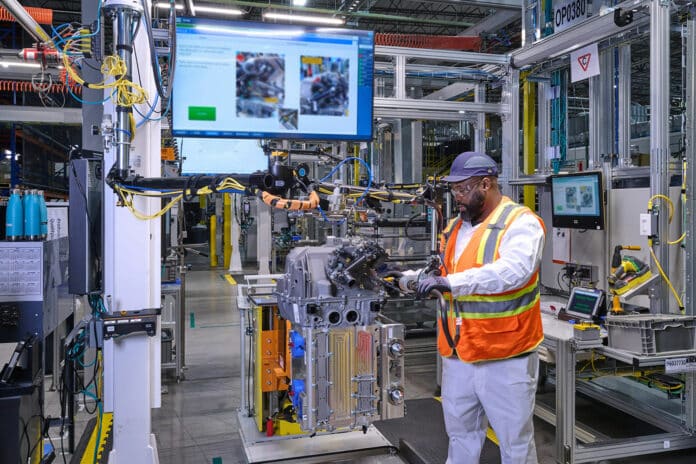General Motors and Honda have started the production of hydrogen fuel cells that will eventually make their way into various product applications.
Hydrogen fuel cells use compressed hydrogen as their fuel, which produces water vapor as the only byproduct. This technology has attracted the interest of many car manufacturers, who see it as a way to improve the performance of heavy-duty vehicles and portable power generators and reduce the environmental impact of gasoline-powered vehicles.
Fuel Cell System Manufacturing (FCSM) was established in 2017 as a joint venture between GM and Honda. The two companies have also worked together on battery electric vehicles, such as the Honda Prologue, Acura ZDX, and Cruise Origin.
FCSM’s 70,000-square-foot facility was funded by an $83 million investment from both companies. The companies call it the first large-scale manufacturing joint venture to build fuel cells.
Fuel cells use hydrogen to generate electricity but have not been widely adopted for passenger cars. Honda’s Clarity, one of the few hydrogen-powered cars on the market, was discontinued in 2017. The main challenge is the lack of a refueling network. Automakers are now shifting their focus to work trucks and construction equipment, which can benefit from hydrogen’s high energy density and low emissions. These vehicles can also be refueled in centralized locations, reducing the need for a widespread infrastructure.
For many years, GM and Honda have built a strong partnership based on several collaborations in the fields of electric and autonomous vehicle technologies. One of their first joint projects was the co-development of a next-generation fuel cell system and hydrogen storage technologies, which started in 2013. In 2018, Honda joined GM’s efforts to develop EV battery modules.
In 2020, the two companies announced their plans to co-create two EVs, including the Honda Prologue, which will be launched in early 2024, followed by Acura’s first EV SUV. In addition, the two companies are working together to enable the global production of millions of EVs starting in 2027, including compact crossover vehicles. They plan to leverage their respective technologies, designs, and sourcing strategies to achieve world-class quality, higher throughput, and greater affordability. With an annual volume of over 13 million vehicles, the compact crossover segment is the largest in the world.
